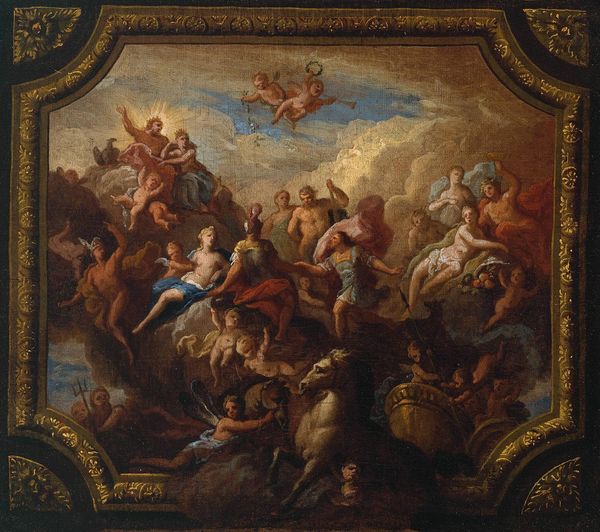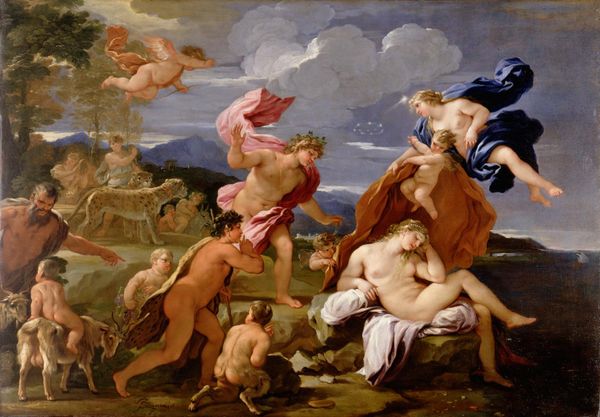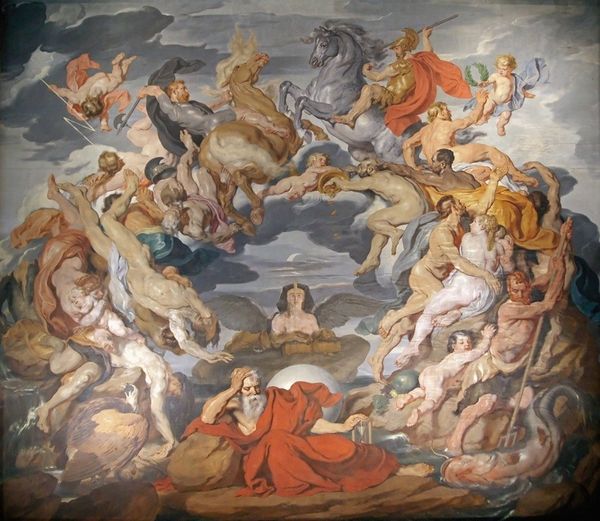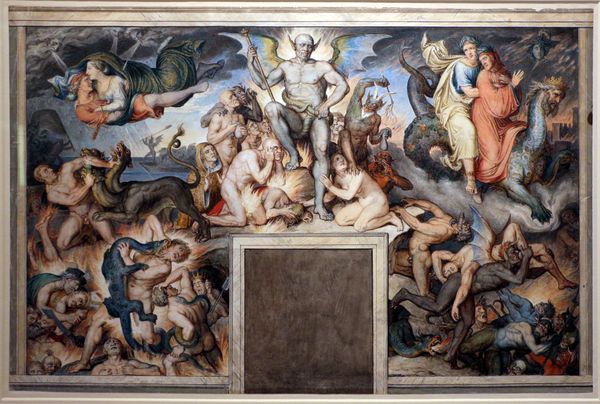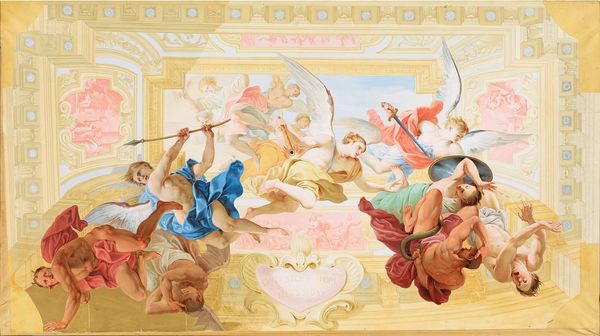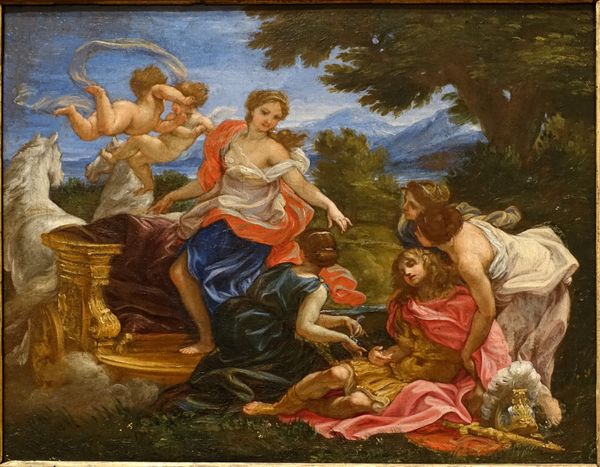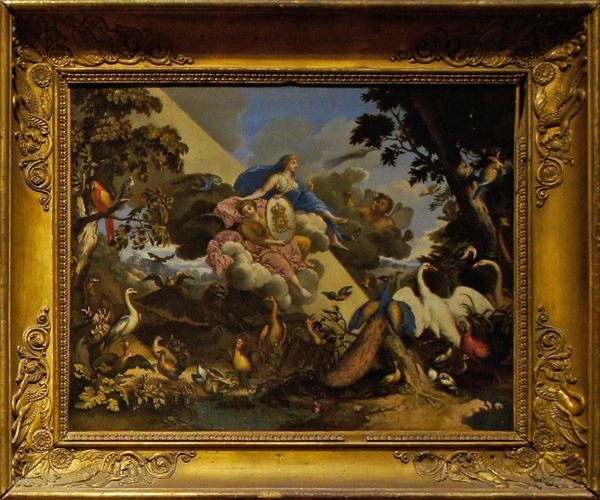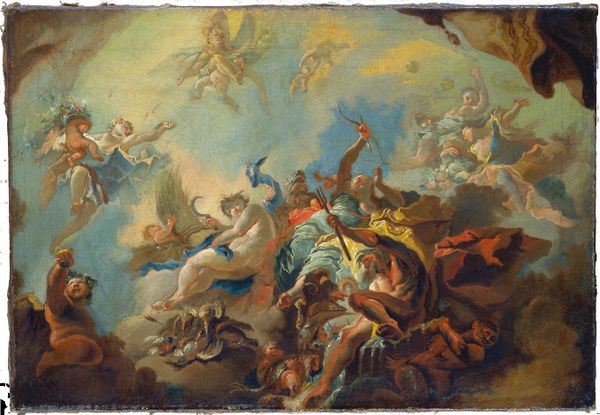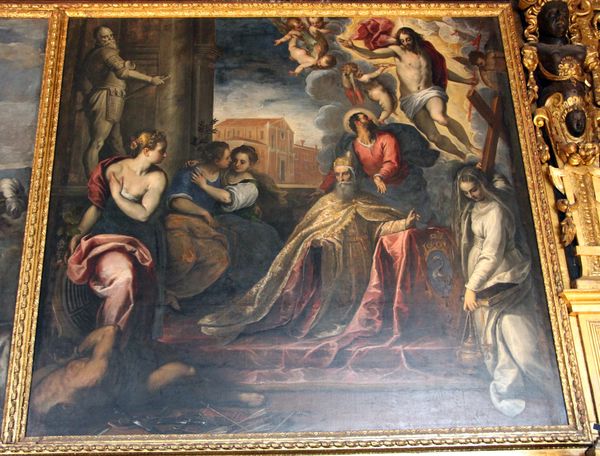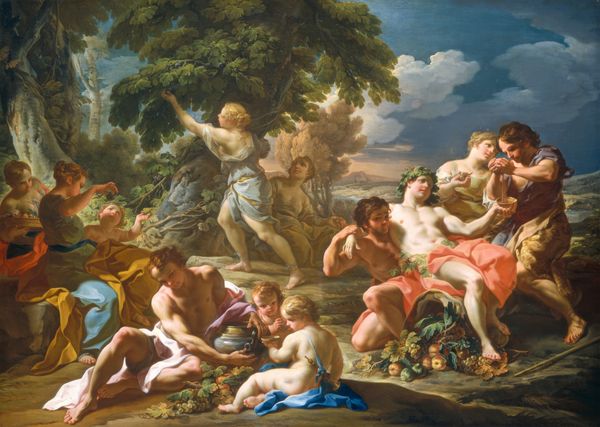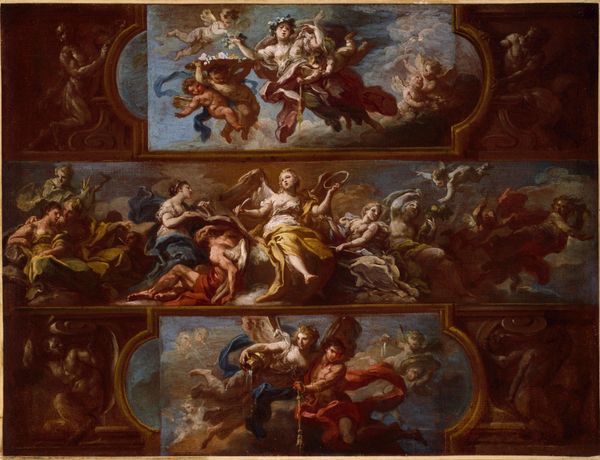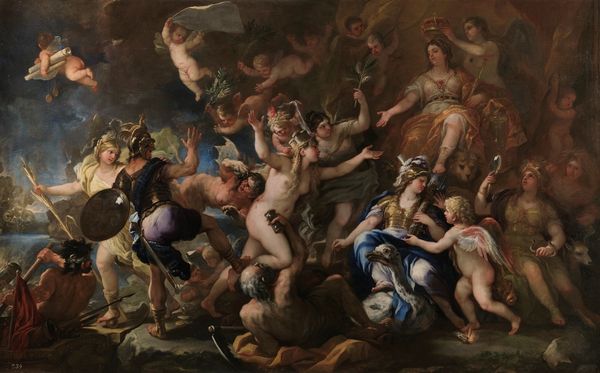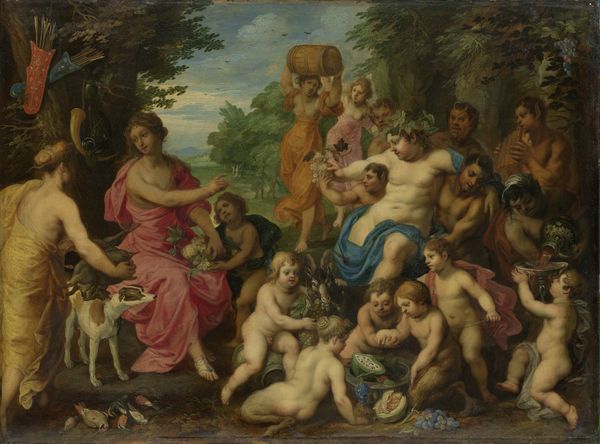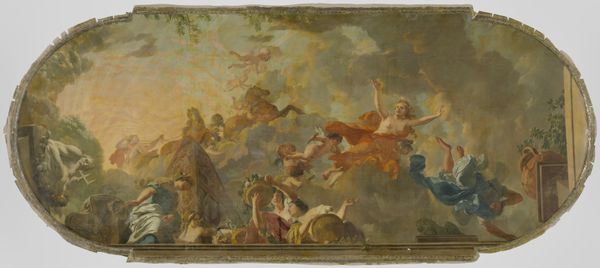
Copyright: Public domain
Curator: Immediately, the sweeping movement in this work strikes me, a dance of figures swirling toward some central point. A grand procession perhaps? Editor: It’s quite a theatrical scene, isn’t it? What you are observing here is Károly Lotz's oil painting, "Ilona Tündér and Prince Árgyélus" completed around 1865. Curator: Lotz... right! The use of oil here, you can really see the layering. There’s almost a textile feel, in how these bodies draped with fabric seem almost woven together. You sense that? Editor: Absolutely. Look closely, and the historical context becomes clearer. The Romantic style lends itself well to the theatrical subject of legend and high emotion on display here. Lotz and others of this period in Hungary were engaged in developing new materials that were durable in the specific indoor spaces where they were exhibiting the art and building patronage among a new class of nobles, businessmen, and bourgeois. Curator: So material ingenuity meeting expressive liberty. That does resonate, doesn't it? There’s a certain... opulence hinted at, even if the colour palette feels somewhat subdued to my eye. The swan down there almost looks ready to preen. I imagine the figures bathed in a stage light glow? Editor: Well, the use of figuration and the allegory speaks to a complex visual language the audiences of the time were attuned to, but might need a program to decipher some symbols and meaning. He does blend history with pure fantasy. I am wondering if we look more deeply into the process by which colors and styles were selected and whether he worked solo or within a studio to discern more clearly how we are seeing what we're seeing now. Curator: Fair points! The social sphere of it all is compelling. All I know is, whatever processes went into this piece... it sings of drama, of a specific theatricality and passion that someone thought of sharing, on canvas, for us all to hear! Editor: A collaborative endeavour then, on all accounts. The final work as well as the artistic practice needed a community to thrive. I find myself appreciative of how art and human endeavor blend to illuminate ways we learn about the past in visual and material culture.
Comments
No comments
Be the first to comment and join the conversation on the ultimate creative platform.
